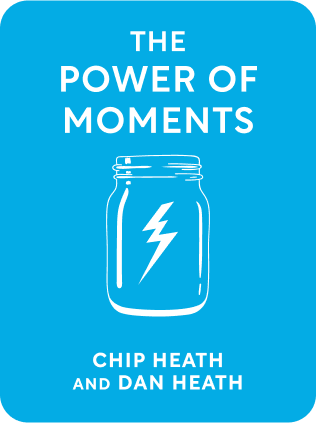

This article is an excerpt from the Shortform book guide to "The Power of Moments" by Chip Heath and Dan Heath. Shortform has the world's best summaries and analyses of books you should be reading.
Like this article? Sign up for a free trial here .
How do you get through negative pits in life? Do you try to distract yourself from the negativity or do you look for ways to turn the negative into positive?
Most people deal with difficult times by trying to lessen the impact of negative emotions. But hard moments in life have the potential to become positive and beautiful experiences that you’ll look back on fondly. In their book The Power of Moments, Chip and Dan Heath suggest two ways of turning negative pits into positive peaks.
Here is how to turn the negative into positive.
Dealing With Negative Pits
Negative pits are the emotional lows of an experience—without any intervention, these are the moments someone will remember about an experience when they reflect on it. The Heaths observe that most people react to a negative pit by trying to find a way to fix it and lessen the negative emotions of it. For example, clients hate being on hold, so many companies will play music or trivia to fill the wait time. By fixing the negative pit of being on hold with an entertaining distraction, these companies help ensure that the long wait time isn’t what the client recalls most vividly about her experience.
The Heaths explain that hard moments can actually become positive defining moments when you go beyond simply repairing them—and instead, find a way to turn the negative into positive. There are two ways you might do this:
1) Create an unexpected positive experience in response to the pit. Take the pet supply company Chewy as an example: If you inform them that your pet has passed away, they cancel your food delivery subscription immediately. This is the response you expect of them. However, they then go above and beyond expectation to fill in your negative pit with something positive—they send you flowers and a handwritten sympathy card signed by the Chewy team. In this way, they create a positive defining moment that will stand out in your memory when you recall your experience with their brand.
2) Put together a plan of action in response to the negative pit. The Heaths attest that the most memorable—but most uncommon—way to fix a negative pit is to make a perceptible effort to fix it. In many cases, acknowledging a problem, coming up with a plan, and demonstrating a willingness to make things right can make people think of the experience as overall positive.
- For example, a car rental company finds that they don’t get very high customer satisfaction ratings when everything goes perfectly. Rather, their highest ratings come from instances of booking mix-ups and car breakdowns because these situations allow them to demonstrate an effort to work with the client and remedy the problem as quickly as possible. Though something went wrong, the company’s response creates a positive defining moment for their client. Instead of recalling the negative moment, she recalls their swift plan of action and willingness to do everything possible to fix the mistake.
| In their book, the Heaths largely focus on turning negative pits into positive peaks within the context of customer service or team member satisfaction, but this idea can apply to personal experiences with negative pits as well—such as receiving a daunting diagnosis or experiencing failure. Turning negative pits into positive peaks in these personal experiences often isn’t obvious or doesn’t look “fun” as it does in customer service or employee loyalty contexts. Rather, it shows up in personal transformations, a deepening understanding of yourself and your values, and a newfound appreciation of your strength or abilities. |

———End of Preview———
Like what you just read? Read the rest of the world's best book summary and analysis of Chip Heath and Dan Heath's "The Power of Moments" at Shortform .
Here's what you'll find in our full The Power of Moments summary :
- How to make everyday experiences meaningful and memorable
- A look at the four elements that create meaning
- How your senses can play a role in elevating everyday moments






